|
A Babel of Bibles In 1535, Myles Coverdale printed the first complete English language Bible. One year later, his friend and mentor William Tyndale was burned at the stake for translating, printing, and distributing an English language version of the New Testament. Like his mentor Tyndale (and their mutual friend Martin Luther), Coverdale had embarked on a career of defying the Roman Catholic Church and the secular authorities who enforced its will in order to supply his countrymen with the words of the scripture in their own comprehensible tongue.
In 1535, Myles Coverdale printed the first complete English language Bible. One year later, his friend and mentor William Tyndale was burned at the stake for translating, printing, and distributing an English language version of the New Testament. Like his mentor Tyndale (and their mutual friend Martin Luther), Coverdale had embarked on a career of defying the Roman Catholic Church and the secular authorities who enforced its will in order to supply his countrymen with the words of the scripture in their own comprehensible tongue.
Meanwhile, in his role as the outlaw fringe, Coverdale must have expected to spend the rest of his days dodging Tyndale's fiery fate. And yet a mere 3 years after Tyndale's execution, Coverdale received a royal invitation from King Henry VIII -- the same King who had allowed Tyndale to burn -- to help create the very first official English language Bible. Ironically, although this new English language Bible, called The Great Bible, would draw most of its New Testament from the outlawed work of William Tyndale, Tyndale himself would continue to receive public condemnation. In 1543 Parliament officially banned his New Testament version as a "crafty, false and untrue translation".
During the subsequent reign of Queen Elizabeth I, this Geneva Bible was widely printed and became so vastly popular that even William Shakespeare relied upon it. All scriptural quotes used by the Bard were drawn from the pages of the Geneva Bible. Despite its popularity, it was not destined to become the official Bible of the Anglican Church. Until 1611, this role was filled by The Bishop's Bible, a revision of the Great Bible created by Coverdale for King Henry. By 1545 the Roman Catholic Church had accepted the reality that the new Protestant faith could not simply be stamped out through burnings and threats of eternal damnation. As powerful kings and princes sided with (and protected) the Protestant heretics, the Catholic hierarchy was forced to add new tactics, attempting to compete rather than simply condemn. Via the Council of Trent (1545-1563) the Church proposed reforms designed to trim back the excesses of corruption that had fueled the Protestant Reformation in the first place. However they refused to make any concessions on doctrine and in fact made a large show of threatening excommunication to those mouthing Protestant ideas.
Not wooed back into the flock by these changes, the Anglican Church instead commissioned its own new and "authoritative" English language Bible. The joint work of 50 different scholars, this King James Authorized version (so called because it was done at the request and approval of King James) was heavily influenced by the earlier English versions as well as by the old Latin Vulgate version and by the politics of the day. That is, while the King James Bible was (and sometimes still is) hyped as a definitive work, the result of fresh, original and expert translation, it was actually engineered to retain much of the content and feel of earlier English Bibles. It was shrewdly understood that this would lend it a sense of authenticity and authority, in the eyes of readers already familiar with these earlier versions. Thus, although the King James Bible would eventually become the darling of Protestants of many nations, it still contained many of the errors that Protestant scholars had derided in the Latin Vulgate. Some of these errors were of course more significant than others, being deliberate doctorings carried out by the Catholic Church in earlier centuries, while others were simple slips in translation.
Such errors only serve to highlight the fact that when we speak of "The Bible", especially when invoking it to justify moral conventions or legal rulings, we must at the very least qualify our statements by noting which Bible we are referring to. The entire history of the Bible cautions us against treating any single volume or edition of scripture as unbiased holy writ, the direct and literal word of God. Meanwhile, there remain those groups and individuals who would like us to believe that their favorite version of the Bible is the Bible, the one true Bible. Some Christian Fundamentalists, for example, would like us to believe that the old authorized King James Version is the Christian Bible. They imagine that the so-called errors which it contains are not errors at all but rather incidents of divine intervention, corrections made by God himself through human agents. The fact that the text of the King James authorized version differs from earlier text fragments transcribed closer to the actual time of Christ troubles them not at all. On the other hand, the idea that the Bible can continue to evolve, continue to be updated and presented in newer, even allegedly more accurate versions, troubles them deeply. Perhaps because they sense that such revisionism takes the Bible toward a "slippery slope" where fag hate and sexism and the compassionless slaying of the enemy (yea, even their women and their children and their beasts) all becomes but an ugly memory. Heaven forbid Christians should start loving their neighbors and recalling that, as Clement of Alexandria put it, "Where the Spirit of the Lord is... there is liberty, for All things are pure to the pure."
But due to the strong Calvinist leaning of these same marginal notes (Calvin did help construct the Geneva Bible after all), the Geneva Bible was deemed seditious by King James. In fact, ownership of the Geneva Bible, which had been so popular during the reign of Elizabeth, was made a felony. In the face of such intolerance (for their preferred brand of Christianity), the Puritans and Pilgrims set off to the New World to construct their own community of worship, free of Catholic "impurities".
Nonetheless, nothing unifies a people like a common enemy. And Americans found a common enemy (and became Americans) during the Revolutionary War. Religious bickering and bloodshed was forced to take a back seat to patriotic bickering and bloodshed. Significantly, during the war's embargo on goods imported from England, many Americans ended up switching Bible brands, from the Calvinist Geneva Bible to the Anglican King James Bible which was suddenly the only version available for purchase. During the embargo Americans were forced to buy Bibles printed in the colonies, and at the time, there were none. So Robert Aitken stepped up to the plate and began printing up scores and scores of the King James bible, making it the very first (English language) Bible to be printed in America (an act for which a grateful nation, via George Washington, later commended him). Eventually, thanks in part to Aitken's timely provisioning, the KJV grew very popular in the U.S. Supposedly, improvements in typesetting within Isaac Collins' 1791 edition of the KJV further fueled popularity. But although the King James Bible is now in wide usage in the United States (and abroad, as carried by missionaries), the KJV we know today is not the same book that was authorized by King James himself. As a matter of fact, in 1769 the KJV was radically revised. It was not only given updated spelling, typography, and more modern language usage, but it was also philosophically revised. Word choices which de-emphasized the role of mankind's free will were replaced, shifting the emphasis back to a more Catholic emphasis on the feasibility and importance of redeeming works. As people continued to clamor to understand just what the heck the Bible said (and meant), even more "new and improved" Bibles began to dot the religious landscape:
Naturally these Bibles varied as to the extent and purpose of their defining improvements. Outwardly, the goal of each new version was to make the "real meaning" of the Bible more available to modern readers (seemingly a much simpler goal now that no one was being beaten or burned at the stake for it). But it would seem there is often a hidden agenda -- namely to revamp an old version of the Bible and pass it off as something "new". The purpose is to win over new adherents to the old religious agendas and points of view. So, for example, although the English Standard Version (ESV) is sometimes touted as a wholly new and authoritatively accurate translation -- the preface even claims that "the ESV is based on the Masoretic text of the Hebrew Bible" -- some feel it should be viewed as the old King James Bible dressed up in new clothes. Critics charge that far from being a new translation of the Masoretic Hebrew Bible (i.e. the pre-Catholic version of the Old Testament), it in fact trots out the same old Septuagint material that has been with us through all the Catholic versions of the Bible into the authorized King James Bible. Given that the hype for the ESV may sucker in casual Christians and curious spiritual seekers shopping for a new, unbiased, and more linguistically correct text of the Bible, one cannot help but speculate whether this whole misrepresentation was not a deliberate attempt to lure moderates and liberals over to the KJV-thumping radical conservative camp. (In point of fact, it might have been more honest to bill the ESV as the "Fundy Bible for the New Millennium".)
Regardless of what one thinks of such claims, there have always been political motives for publishing "new and improved" versions of the Bible (and claiming that they are more authentic that past versions). But at the same time, language is always evolving: the translation that delights one generation will utterly perplex their descendents 400 years later. Newly updated translations really can clarify content and meaning. However slavish devotion to old versions can hamper such revision. For example, compare the following passages: Love never fails. But where there are prophecies, they will cease; where there are tongues, they will be stilled; where there is knowledge, it will pass away. For we know in part and we prophesy in part, but when perfection comes, the imperfect disappears. ... Now we see but a poor reflection as in a mirror; then we shall see face to face. Now I know in part; then I shall know fully, even as I am fully known. And now these three remain: faith, hope and love. But the greatest of these is love.  The first passage is obviously murkier, more difficult to decipher. Though it was generated quite recently, this version of the Bible (The NIV version) still retains some of the riddle-like quality that led readers to seek a new edition in the first place.
The first passage is obviously murkier, more difficult to decipher. Though it was generated quite recently, this version of the Bible (The NIV version) still retains some of the riddle-like quality that led readers to seek a new edition in the first place.
Still, as much as we might prefer the smooth flowing text of the REB version (the second passage), it is important to remember that all modern attempts to represent the Bible via shining new translations from "the originals" really cannot do so -- no matter how honest their intentions. The texts of the Old and New Testament simply no longer exist in their original forms. All anyone has to translate from are copies of copies of copies. Furthermore, we know unequivocally that these texts have been tampered with and altered over time. And we know that alterations and errors were introduced both accidentally, through scribal errors, and intentionally for political or ideological reasons. Therefore, no amount of retranslating the remaining fragments of those antique copies will allow us to view the original texts as they were written and intended to be read. Nor should we mistakenly confer on them some kind of false authority and accuracy simply because they are so old. In short, they are not old enough! By Christian reckoning, the longest-lived Apostle died about 19 centuries ago. Therefore, texts which are only 16 centuries old should not be assumed to be accurate records of his thoughts and deeds, nor those of Jesus. And even less legitimacy should be accorded to the Latin Vulgate (created 500 years after Jesus' time) or the King James Bible (created 1600 years after) -- especially when each has been shown to contain glaring discrepancies of significant doctrinal importance. How then are Christians to know the true message of Christ? For some the answer has simply been to fall back on tradition -- to trust that what was passed down for generations must have some authority (despite the folly of this approach, as discussed above). But for others, there have been some exciting developments in the last century that give hope that we may be able to piece together Christianity's earlier (and more authentic) message through comparing current and historic versions of the Bible with newly discovered fragments, such as the Gospel of Thomas and other works from Nag Hammadi, the Secret Gospel of Mark, the Dead Sea Scrolls, and other similar finds. Additionally, current methods of literary analysis may allow religious scholars to read more deeply between the lines to draw out messages implied or suppressed, but never stated. For example, some scholars believe that by comparing various New Testament texts they can discover subtle clues to unlock various mysteries and uncertainties present within existing fragments and versions of the Gospels. Material that was once deleted (to discard or cover up various points of doctrine) may be restored in this way, further illuminating the original Christian scriptures. Of course, barring this, one could just wait for Armageddon and the attendant Second Coming of Christ. Given the way things are going, we might not have very long to wait for the big guy to come and set the record straight.
|
 Coverdale based his Bible's New Testament on the very work for which Tyndale had been executed, and its Old Testament on the translational work of Martin Luther. Significantly, Coverdale's Bible included the 7 (deutercanonical) books that Luther had rejected as inauthentic scripture and the basis of bogus Catholic doctrines. Here Coverdale set a precedent that would be imitated by English Bibles until the late 19th century. While initially his work was considered the heresy of an outlaw fringe element, its very antiquity (vis-à-vis much later generations) would eventually come to lend it a certain authority. Thus it was followed or imitated by Protestants who wanted nothing to do with Catholic doctrines -- even though Coverdale's work retained the texts that supported them.
Coverdale based his Bible's New Testament on the very work for which Tyndale had been executed, and its Old Testament on the translational work of Martin Luther. Significantly, Coverdale's Bible included the 7 (deutercanonical) books that Luther had rejected as inauthentic scripture and the basis of bogus Catholic doctrines. Here Coverdale set a precedent that would be imitated by English Bibles until the late 19th century. While initially his work was considered the heresy of an outlaw fringe element, its very antiquity (vis-à-vis much later generations) would eventually come to lend it a certain authority. Thus it was followed or imitated by Protestants who wanted nothing to do with Catholic doctrines -- even though Coverdale's work retained the texts that supported them.
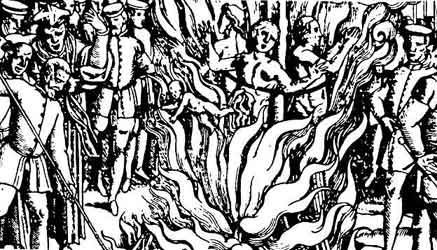 King Henry's new Great Bible and his break with the Roman Catholic Church did not put a permanent end to Protestant persecution in England. Catholicism made a brief comeback during the reign of Henry's daughter, Bloody Mary (who had at least 275 Protestants burned at the stake, including the Archbishop of Canterbury himself). In response, Coverdale fled to Switzerland where he would meet another group of highly influential Protestant scholars, among them John Calvin, John Knox, William Whittingham, and John Foxe. Together they pooled their skills to produce the Geneva Bible, the Bible eventually carried to America by the Puritans and the Pilgrims. Mary's attempts to destroy the Protestant faith ultimately birthed the book that would later aide its spread.
King Henry's new Great Bible and his break with the Roman Catholic Church did not put a permanent end to Protestant persecution in England. Catholicism made a brief comeback during the reign of Henry's daughter, Bloody Mary (who had at least 275 Protestants burned at the stake, including the Archbishop of Canterbury himself). In response, Coverdale fled to Switzerland where he would meet another group of highly influential Protestant scholars, among them John Calvin, John Knox, William Whittingham, and John Foxe. Together they pooled their skills to produce the Geneva Bible, the Bible eventually carried to America by the Puritans and the Pilgrims. Mary's attempts to destroy the Protestant faith ultimately birthed the book that would later aide its spread.
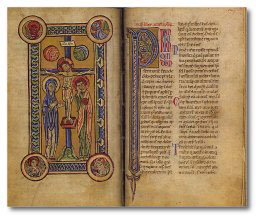 In 1582, they finally responded to the desire for an English language version of the Bible -- a need that Protestantism had been filling for nearly 50 years -- by publishing the Rheims New Testament. The Douay Old Testament followed it in 1609. Protestant scholars rejected their efforts, claiming that the "new" version was riddled with the same old inaccuracies as the Latin Vulgate.
In 1582, they finally responded to the desire for an English language version of the Bible -- a need that Protestantism had been filling for nearly 50 years -- by publishing the Rheims New Testament. The Douay Old Testament followed it in 1609. Protestant scholars rejected their efforts, claiming that the "new" version was riddled with the same old inaccuracies as the Latin Vulgate.
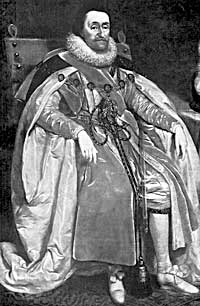 However, the King James Bible also retained errors from other versions of the scriptures, such as the New Testament version translated by Erasmus. For example, the authorized KJV version of Acts 8:37 reads, "And Phillip said, if thou believest with all thine heart, thou mayest. And he answered and said, I believe that Jesus Christ is the Son of God". This passage can only be found in the margins of a particular manuscript of Erasmus' translations, and not in any earlier translations of this same scripture -- whether done by Erasmus or anyone else. Even translations passed down through other early branches of the Christian Church (such as the Coptic, the Syrian, etc.) show no sign of it. More importantly, this error would continue to haunt later versions of the Bible and be accepted as an authentic part of the scripture.
However, the King James Bible also retained errors from other versions of the scriptures, such as the New Testament version translated by Erasmus. For example, the authorized KJV version of Acts 8:37 reads, "And Phillip said, if thou believest with all thine heart, thou mayest. And he answered and said, I believe that Jesus Christ is the Son of God". This passage can only be found in the margins of a particular manuscript of Erasmus' translations, and not in any earlier translations of this same scripture -- whether done by Erasmus or anyone else. Even translations passed down through other early branches of the Christian Church (such as the Coptic, the Syrian, etc.) show no sign of it. More importantly, this error would continue to haunt later versions of the Bible and be accepted as an authentic part of the scripture.
 While some American religious conservatives continue to champion the authorized KJV, the KJV was not the Bible of America's spiritual forefathers. In fact, when the Pilgrims arrived in the New World, what they bore with them in 1620 was the Geneva Bible. The KJV had not yet gained wide popularity in England at the time of their departure, and in addition, the Geneva Bible contained copious marginal notes (300,000 words, or 1/3 of the total text). These notes of explanation and spiritual instruction seemed ideally suited to families planning to raise their children in a distant wilderness.
While some American religious conservatives continue to champion the authorized KJV, the KJV was not the Bible of America's spiritual forefathers. In fact, when the Pilgrims arrived in the New World, what they bore with them in 1620 was the Geneva Bible. The KJV had not yet gained wide popularity in England at the time of their departure, and in addition, the Geneva Bible contained copious marginal notes (300,000 words, or 1/3 of the total text). These notes of explanation and spiritual instruction seemed ideally suited to families planning to raise their children in a distant wilderness.
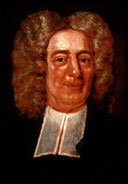 Ironically, John Adams, second president of the United States, wrote: "Let not Geneva be forgotten or despised. Religious liberty owes it most respect." Anyone who's ever read the Scarlet Letter or other works (historic or literary) regarding America's early spiritual communities knows that "religious freedom" was less about tolerance and diversity than about finding the elbow room to set up your own religious community in order to practice the "correct faith" and persecute anyone who tried to disagree with you within earshot.
Ironically, John Adams, second president of the United States, wrote: "Let not Geneva be forgotten or despised. Religious liberty owes it most respect." Anyone who's ever read the Scarlet Letter or other works (historic or literary) regarding America's early spiritual communities knows that "religious freedom" was less about tolerance and diversity than about finding the elbow room to set up your own religious community in order to practice the "correct faith" and persecute anyone who tried to disagree with you within earshot.
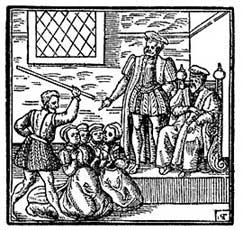
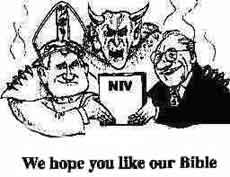 It is also worth noting that ESV is not the only Bible trying to con this same demographic group (young educated moderates, etc.). In fact, Fundamentalists themselves point out (quite gleefully) that the NIV (New International Version) Bible is trying to dupe spiritual seekers into swallowing the legitimacy of Catholic dogma by dressing up the old Catholic Latin Vulgate as a fresh, scholarly and unbiased translation when in reality it is not.
It is also worth noting that ESV is not the only Bible trying to con this same demographic group (young educated moderates, etc.). In fact, Fundamentalists themselves point out (quite gleefully) that the NIV (New International Version) Bible is trying to dupe spiritual seekers into swallowing the legitimacy of Catholic dogma by dressing up the old Catholic Latin Vulgate as a fresh, scholarly and unbiased translation when in reality it is not.